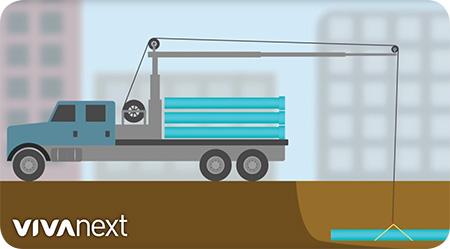If you’re a regular reader of this blog, you’ve probably noticed how often we post a story on some aspect of utility infrastructure. That’s because, as much as our main focus is transit, relocating and upgrading utilities is a very significant piece of our construction project just on its own, in terms of effort, time and money.
Most of our posts are about the complexities and challenges of utility relocation. But the most important story is about the bonus: at the same time as we’re building new transit, York Region residents and businesses are going to be getting new telecommunications, water, sewage, drainage, power and gas lines to power them into the future.
Unlike a single construction project with one overall manager, the utility project demands that many players work together collaboratively. Working within multiple agreements and relationships, our projects [funded by Metrolinx], the Regional and local municipalities, and the utility companies all work together to coordinate the utility construction.
Whereas York Region Rapid Transit Corporation leads the design decisions for the transit project, it’s the utility companies – including private companies and municipal utility companies – who determine what they need to meet the needs of their customers. Starting with our project’s alignment and overall design, it’s up to the utility companies to decide what infrastructure they’ll need as the population grows, and where it needs to go. For this, they need to take into account future development as well as current needs.
Because there’s not much room down there, and there’s a logical order to what goes in first, the utilities need to work out their plans in ways that work for everyone. In some cases they can jointly locate their services, but more often they need their own space within a separate trench or on an overhead line. Finally, they are responsible for carrying out their own construction, with only one crew able to work in a given area at a time.
Because we’re all equal players in this, coordinating activities requires us to work together, including our project team, the designers and construction experts working for the utility companies, and the various levels of government.
With every vivaNext corridor that gets completed, the end result is increased telecommunications capacity, upgraded water and sewage, better drainage, and new service connections to individual houses and businesses. That’s a future bonus that’s definitely worth the effort and a benefit for everyone.

